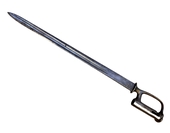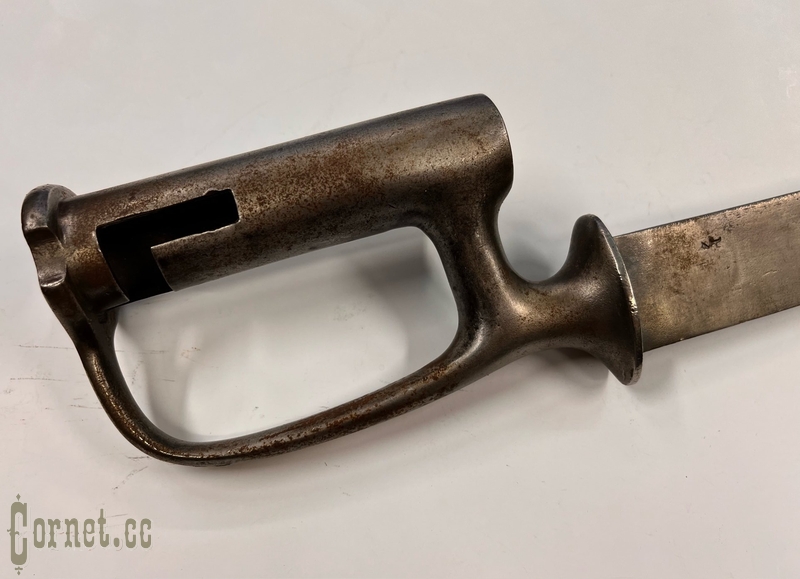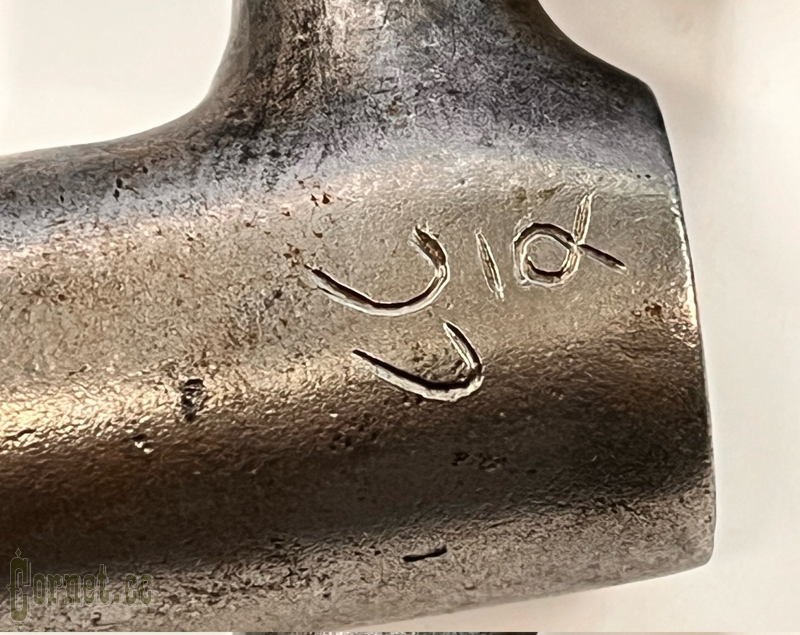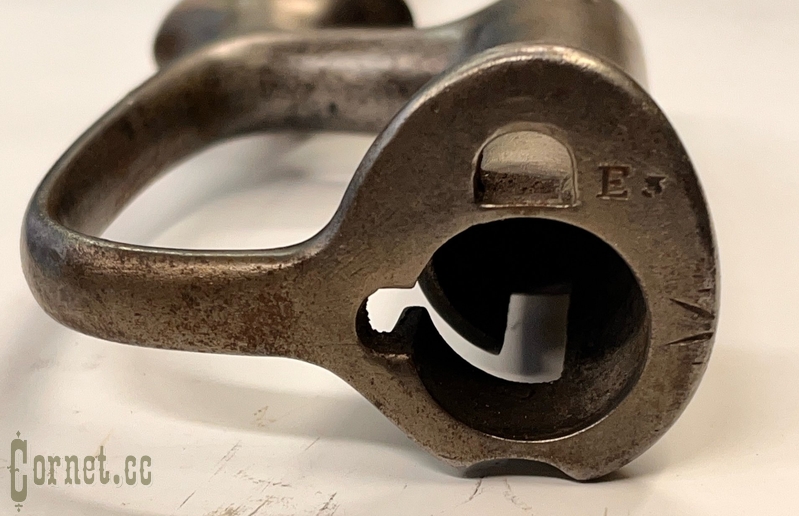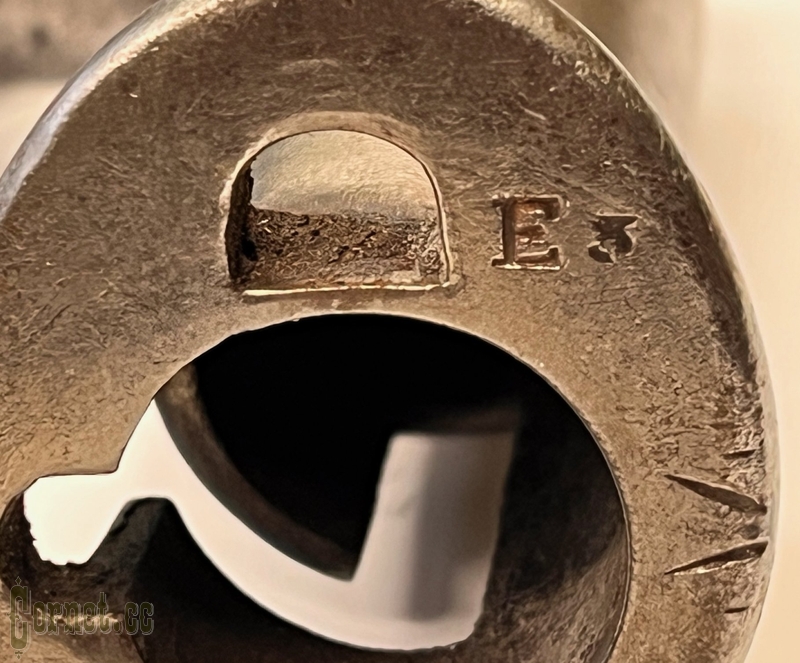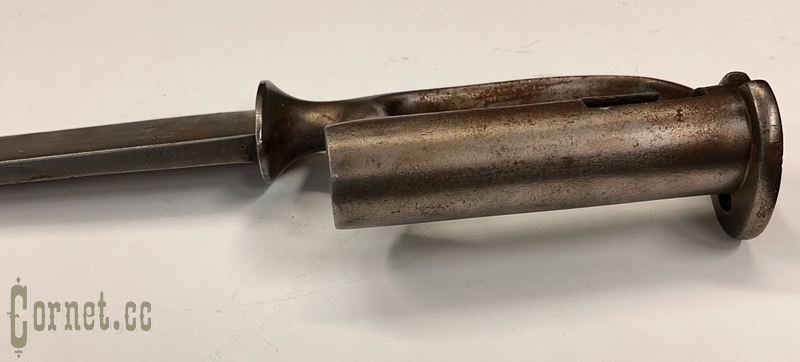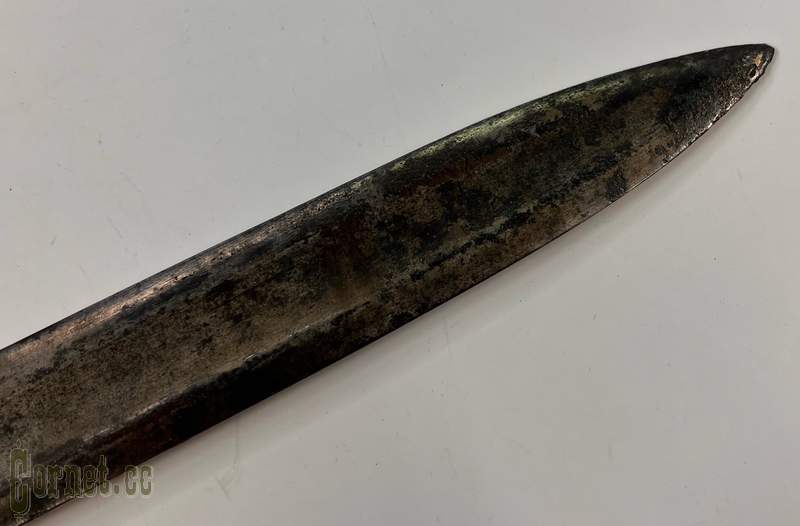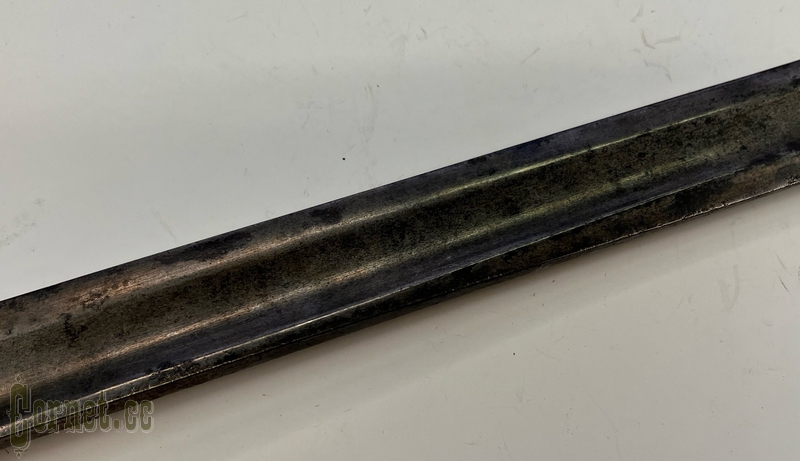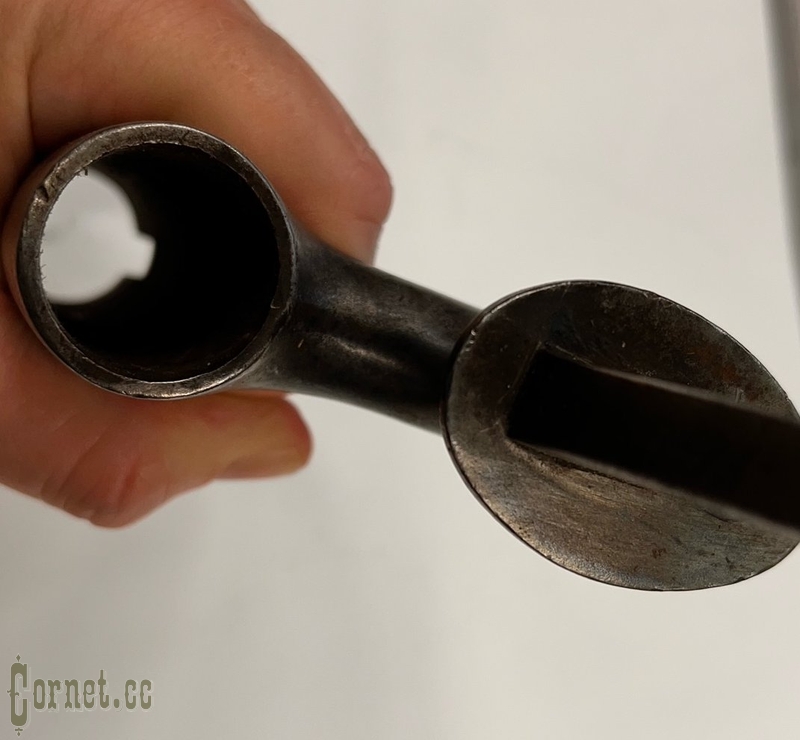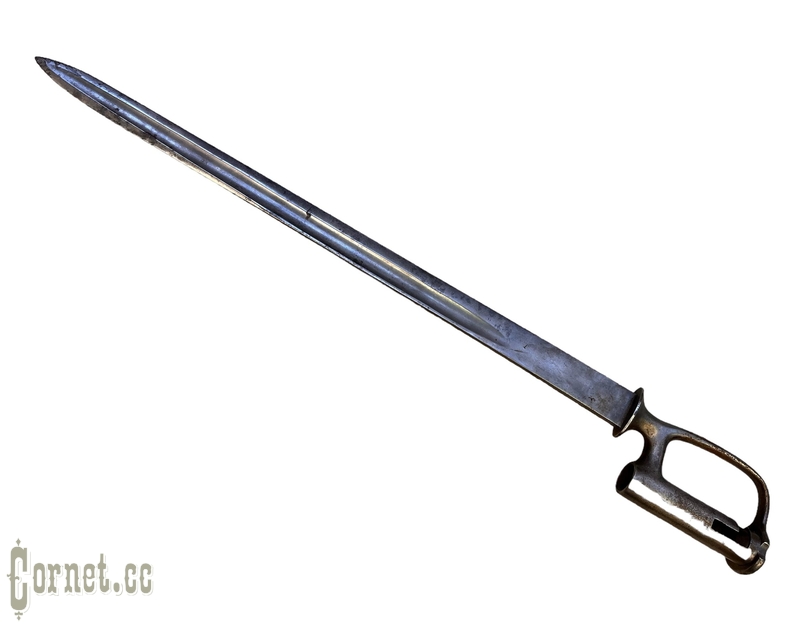№121575 Bayonet cleaver of the East Indian Company of the early 19th century
Great Britain - India.
By analogy with English bayonets, it is also called the bayonet of sappers and miners. Bayonet cleats were made by various English firms and imported to India to arm parts of the East India Company. Presumably, the bayonet cleats of this model were intended for use with Brown Bess guns and converted guns of the 1839 and 1842 models.
The blade is single-edged, down on both sides. The fighting end is double-edged. The neck is short, massive, connected by a protective bow to the rear edge of the tube. A tube with a thickened rear edge, a mulk on top and a two-sided slot running from top to left. On the right side, in the thickening of the back edge of the tube is a rectangular hole for additional attachment of the bayonet to the gun, the so-called "East India Company latch," introduced around 1840.
The bayonets to the gun of the East India Company, produced at various times and by various companies, differed from each other in the shape of the blade, size and other details.
The marking of the bayonet usually consists of the stamp of the manufacturer on the edge of the blade, the inspection stamp of the East India Company and the stamp of the military unit to which the bayonet was assigned, located on the heel of the blade.
Total length: 690 mm. Blade length: 555 mm.
990 € ($1188)
